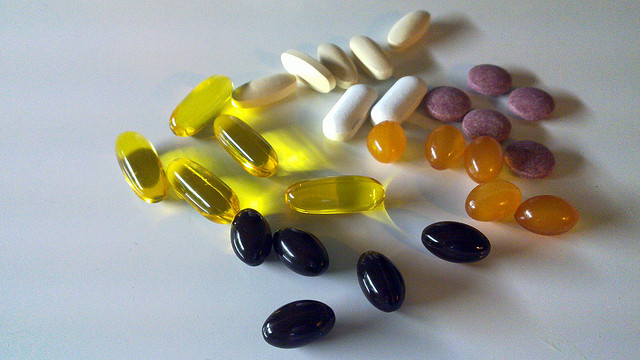It’s the unfortunate truth that many of the vitamin and mineral supplements on the market are produced in a lab.
Today minerals are industrial chemicals manufactured from rock and acid and vitamins contain coal tar derivatives, petroleum and hydrogenated sugars.
So what’s the problem with this?
Nature was designed so that humans could obtain nutrients from food sources. In today’s age, and in most cases, that’s impossible with how altered and processed our food has become. The majority of the vitamins and minerals on the market would be considered plant food and not optimal for human consumption. Plants were the ones designed to ingest and break down these minerals so that we could obtain the nutrients from them.
So what’s the difference between synthetic and food source supplements?
Synthetic supplements (often known as USP) are isolates, which makes their chemical makeup and structure different than non isolates found in food sources.
Will you perish from taking artificial supplements?
Probably not, but it’s best to follow natures laws especially knowing that there are plenty of high quality food source supplements on the market. We also don’t know the long term effects of these artificial supplements so to be sure of optimal health, natural food sources are the best.
The two brands I use and highly recommend are VITAMIN CODE and MegaFood, they can be found in health food stores or online. The next time you’re in the supplement aisle or shopping online take a good look at the labels and keep this list with you.
Artificial Indicators to Look For:
- Words that begin with I, d, or r.
- Words that end with “ate” or “ide”.
- If the vitamin name is by itself. Example: Vitamin D.
- If the vitamin or mineral content is high. Example: Vitamin C 1000mg.
Synthetic Names to Look Out For:
- Nitrate
- Acetate
- Sodium
- Ascorbate
- Sodium benzoate
- Chloride
- Hydrochloride
- Silicon dioxide
- Titanium dioxide
- Bitartrate
- Gluconate
Vitamins with Common Synthetic Names:
- Vitamin A – acetate or palmitate.
- Vitamin B1 – thiamin hydrochloride or thiamin mononitrate.
- Vitamin B2 – riboflavin.
- Vitamin B5 – pantothenic acid or calcium D-pantothate.
- Vitamin B6 – pyridoxine.
- Vitamin B9 – folic acid or pteroylgutamic acid. (folate is from food source)
- Vitamin B12 – cyanocobolamin or cobalamin.
- Vitamin C – ascorbic acid.
- Vitamin D – Most any single form other than the term vitamin D without a number or irradiated ergosteral calciferol.
- Vitamin E – mixed tocopherols, dl-alpha tocopherol, acetate or succinate.
- Vitamin K – k3 or menadione.
- Biotin – d-biotin.
- Choline – choline chloride or choline bitartrate.
Food Sources:
- Citrus
- Fruits
- Berries
- Herbs
- Yeast
- Fish
- Vegetables
Sources:
The Truth About Vitamins in Nutritional Supplements, Robert Thiel, Ph.D., Naturopath.
The Truth About Minerals in Nutritional Supplements, Robert Thiel, Ph.D., Naturopath.
Combining Old and New: Naturopathy for the 21st Century, Robert J. Thiel, Ph.D., 2000.
Love elephant and want to go steady?
Sign up for our (curated) daily and weekly newsletters!
Apprentice Editor: Brandie Smith/Editor: Jenna Penielle Lyons
Photo: asimulator/Flickr












Read 3 comments and reply